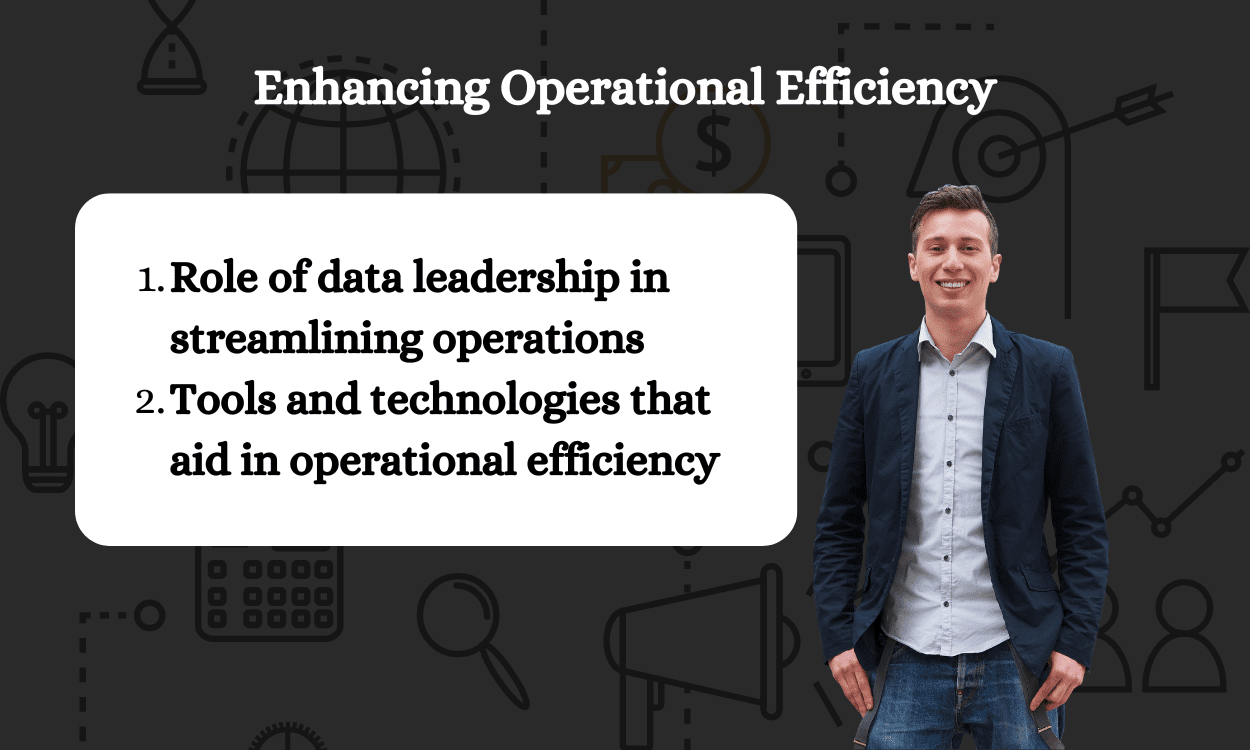Why Data Leadership is Crucial for Business Success
In today’s business environment, companies must effectively leverage the abundance of available data to succeed. Businesses that can effectively collect, analyze, and leverage data will gain a significant advantage. The key differentiator? Strong data leadership. It’s no longer enough to simply have data; you need a captain to steer your data ship towards success.


The Role of a Data Leader
Key Responsibilities of Data Leaders
Data leaders are the architects of a data-driven organization. They don’t just manage data; they breathe life into it. Here’s what they do:
- Develop the data strategy: They craft the roadmap for how data will be collected, stored, analyzed, and used across the organization.
- Champion a data-driven culture: Data leaders are evangelists for data-driven decision-making at all organizational levels.
- Build and manage data teams: They are responsible for attracting, developing, and retaining top data talent.
- Ensure data quality and governance: They establish and enforce data quality standards and ensure compliance with relevant regulations.
- Communicate data insights: They translate complex data into actionable insights that drive business decisions.
Differences Between Data Leadership and Traditional IT Roles
While data leadership and traditional IT roles might seem similar at first glance, there are key differences. Traditional IT focuses on the infrastructure and systems that support data. Data leadership, on the other hand, is about leveraging data as a strategic asset.
Think of it this way: IT builds the roads, while data leadership drives the car, deciding where and how to get there using data as the navigation system.
Skills and Qualities That Make an Effective Data Leader
An effective data leader is a unique breed. They need a blend of technical expertise, business acumen, and leadership skills. Here are some of the essential qualities:
- Strong analytical skills: They can analyze complex data sets, identify patterns and trends, and draw meaningful conclusions.
- Business Acumen: They understand how different parts of the business operate and can connect data insights to business outcomes.
- Communication Skills: They can communicate complex data insights clearly, concisely, and compellingly to both technical and non-technical audiences.
- Leadership and influence: They can inspire and motivate teams, build consensus, and drive organizational change.

Enhancing Operational Efficiency
Organizations constantly seek ways to enhance operational efficiency in the competitive business landscape. This pursuit aims to streamline processes, reduce costs, and boost productivity. This is where data leadership comes in. It plays a crucial role in guiding businesses toward achieving these operational improvements.
Role of data leadership in streamlining operations
Data leaders are essentially agents of change. They drive the adoption of data-driven decision-making across various departments. By implementing data-driven strategies, these leaders directly influence how organizations operate. They can identify bottlenecks. They can streamline workflows. And they can even optimize resource allocation.
Here’s how they do it:
- Process Optimization: Data leaders analyze operational data to pinpoint areas for improvement. They identify inefficient processes. This allows them to streamline workflows, eliminate redundancies, and enhance productivity.
- Resource Allocation: By analyzing data on resource utilization, data leaders can optimize resource allocation and ensure that resources are readily available. Properly allocating resources prevents overstretching and maximizes efficiency.
- Performance Monitoring: Data leaders establish Key Performance Indicators (KPIs) and create dashboards for real-time monitoring. This allows for immediate identification and resolution of operational issues. This proactive approach minimizes downtime and ensures smooth operations.
Tools and technologies that aid in operational efficiency
Data leaders leverage various tools and technologies to streamline operations. Here are a few examples:
- Business Intelligence (BI) Tools: These tools provide insights into operational data, allowing data leaders to identify patterns and trends. They use this information to make data-driven decisions to optimize processes.
- Robotic Process Automation (RPA): This technology automates repetitive tasks, freeing human resources for more strategic initiatives. Data leaders can use RPA to automate tasks such as data entry and invoice processing.
- Cloud Computing: Cloud-based platforms offer scalable and cost-effective data storage and processing solutions. Data leaders can leverage the cloud to implement advanced analytics and machine learning models, enhancing operational insights.

Driving Innovation and Growth
How Data Leadership Fosters a Culture of Innovation
Data leadership plays a crucial role in cultivating a culture of innovation within organizations. Data leaders achieve this by promoting data literacy across all levels. They ensure everyone understands data’s value and can interpret it effectively. This approach empowers teams to make informed decisions and identify new opportunities.
Data leaders also encourage experimentation and risk-taking in a safe environment. They understand that not every data-driven initiative will succeed, and they promote learning from successes and failures. This approach leads to a more agile and innovative workforce. By fostering a data-driven mindset, they empower their teams to uncover hidden patterns, anticipate market shifts, and identify untapped potential.
Methods to Encourage Data-Driven Innovation Within Teams
Data leaders can employ several strategies to promote data-driven innovation:
- Hackathons and Innovation Challenges: These events provide dedicated time and resources for teams to explore new ideas and develop innovative solutions using data.
- Data Visualization and Storytelling Workshops: By teaching teams how to communicate data insights effectively, data leaders can unlock the power of data storytelling, leading to more compelling and persuasive presentations.
- Cross-Functional Data Teams: Creating teams with members from different departments fosters collaboration and encourages the exchange of diverse perspectives, leading to more holistic and innovative solutions.
- Data-Driven Rewards and Recognition: Organizations can create a positive feedback loop that encourages continued experimentation and exploration by recognizing and rewarding data-driven innovation.

Ensuring Data Quality and Compliance
Importance of Maintaining High Data Quality
In today’s data-driven world, businesses rely heavily on data to make informed decisions. But what happens when the data guiding these decisions is inaccurate or incomplete? The consequences can be significant, leading to misguided strategies, missed opportunities, and financial losses.
High-quality data is accurate, consistent, complete, and timely. It reflects the real world and can be trusted to support reliable insights. This data quality is a technical issue and a core business imperative. Businesses need to ensure data quality to achieve their objectives proactively.
Strategies for Implementing Effective Data Governance
Data governance is crucial for maintaining data quality. It’s a collection of processes, policies, and procedures that ensure data is managed correctly. A robust data governance framework helps organizations:
- Define Data Standards: Establish clear guidelines for data quality, ensuring consistency and reliability across the organization.
- Establish Data Ownership: Identify individuals responsible for the quality and maintenance of specific datasets.
- Implement Data Quality Checks: Incorporate automated processes to identify and rectify errors, inconsistencies, and missing data.
Data Compliance and Regulatory Considerations
Navigating the legal landscape of data privacy is essential. Businesses face growing regulations regarding collecting, storing, and using data. Failure to comply with these regulations, such as GDPR or CCPA, can lead to hefty fines and reputational damage. A robust data governance framework helps businesses stay compliant:
- Data Security: Implement measures to protect sensitive data from unauthorized access, breaches, and misuse.
- Data Privacy: Adhere to data privacy regulations by obtaining consent, providing transparency, and respecting individual rights.
Tools for Monitoring and Ensuring Data Quality
Various tools can help businesses proactively monitor and manage data quality:
- Data Profiling Tools: Analyze data to identify patterns, anomalies, and inconsistencies that may indicate data quality issues.
- Data Quality Monitoring Tools: Track data quality metrics over time, alerting stakeholders to potential problems and enabling proactive intervention.
- Data Cleansing Tools: To enhance accuracy, identify and correct errors, inconsistencies, and duplicate data entries.

Competitive Advantage
In today’s business world, data reigns supreme. Organizations that effectively harness their power gain a significant competitive advantage. This is where data leadership comes into play. Effective data leaders possess the vision to transform data into actionable insights, propelling their organizations ahead of the curve. They understand that data is not enough; it needs a guiding hand to unlock its true potential.
How Data Leadership Can Provide a Competitive Edge
Data leadership plays a critical role in fostering a data-driven culture within organizations. This culture shift empowers businesses to make informed decisions at every level. Companies gain valuable insights that drive strategic decision-making by analyzing market trends, customer behavior, and competitor strategies. This leads to enhanced operational efficiency, better resource allocation, and improved products and services tailored to meet evolving customer demands.
Data leaders also spearhead the adoption of advanced analytics and business intelligence tools. By implementing such technologies, businesses gain a deeper understanding of their data, identifying patterns and trends that might go unnoticed. Data leaders can further manage these insights to optimize pricing strategies, streamline supply chains, and personalize customer experiences. Ultimately, data leadership empowers organizations to adapt quickly to market dynamics, giving them a competitive edge in today’s fast-paced business environment.
Techniques for Leveraging Data for Market Insights and Trends
Extracting meaningful market insights and trends from data requires a strategic approach. Data leaders employ various techniques to uncover these valuable nuggets of information. Here are a few key methods:
- Predictive Analytics: By analyzing historical data, predictive analytics can forecast future trends and outcomes. This data allows businesses to anticipate market shifts, customer behavior, and potential risks, enabling them to make proactive decisions.
- Social Media Listening: Monitoring social media platforms provides valuable insights into customer sentiment, brand perception, and emerging trends. Data leaders utilize social listening tools to understand customer conversations and adapt their strategies accordingly.
- Market Segmentation: Data allows businesses to segment their target audience into distinct groups based on demographics, behavior, and preferences. This segmentation enables targeted marketing campaigns, personalized messaging, and tailored product offerings.
- Competitor Analysis: Data leaders monitor their competitors closely. By analyzing competitor data, businesses gain insights into their strengths, weaknesses, and strategies, allowing them to identify opportunities for differentiation and growth.
By embracing these techniques, organizations can leverage data to make informed decisions, optimize operations, and gain a competitive edge in the marketplace. Under the guidance of effective leadership, data transforms from a raw resource into a strategic asset that drives business success.
Need Some Data Support?
Conclusion
Data leadership is no longer a luxury but necessary for businesses aiming to thrive in the digital age. As you’ve read, it is pivotal in optimizing operations, driving innovation, ensuring data quality, and gaining a competitive advantage. By embracing data-driven decision-making and fostering a culture that values data, businesses can unlock new opportunities, mitigate risks, and navigate the complexities of today’s business environment. Remember that investing in strong data leadership is an investment in your business’s future.
Take action today by partnering with Class IV to evaluate your current data strategy and identify key areas for improvement. This will ensure your business is positioned for success in the evolving digital landscape.

